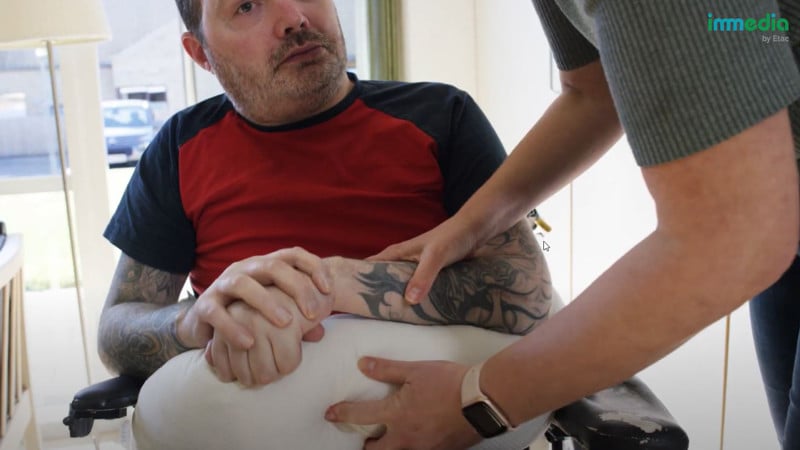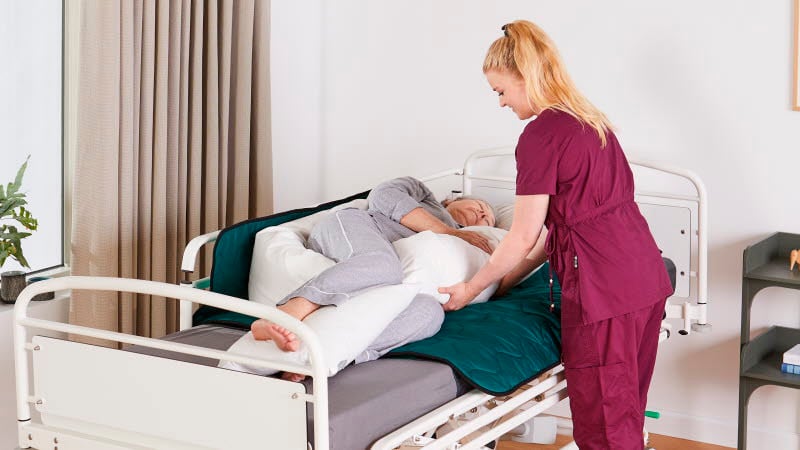
The importance of positioning
We are today well aware of how important it is to prevent pressure and shear with an appropriate resting position 24 hours a day, 7 days a week, as it contributes to maintaining body functions and achieving rest and quality sleep, both of great importance for rehabilitation and for a good quality of life.
At the same time, appropriate positioning helps prevent long-term consequences such as contractures, pain, and pressure ulcers. LeanOnMe consists of a wide range of multipurpose positioning cushions, which contribute to a better life quality experience through:
- Pressure relief
- Prophylactic effect
- Pain relief
- Calming effect
- Non-pharmacological effect
How to use
Immedia LeanOnMe is to be used when there is a need to support the body or protect exposed body parts when positioning a person who is unable to do micro and macro movements.
Especially the following individuals are at risk of pressure ulcers: bedfast, mobility limited, presence of Stage 1 or existing pressure ulcer, decreased perfusion, increased moisture and/or body temperature, poor nutritional status, advanced age, poor sensory perception, and general degraded health status.
Pressure – Prevent and relieve
It is generally accepted that repositioning users who are at risk of developing a pressure ulcer can prevent development by removing pressure from the at-risk site.
The following should be included in every skin assessment:
- skin temperature
- edema and change in tissue consistency in relation to surrounding tissue.
When the individual is able to respond reliably, it is recommended to ask him or her to identify any areas of discomfort or pain that could be attributed to pressure injury.
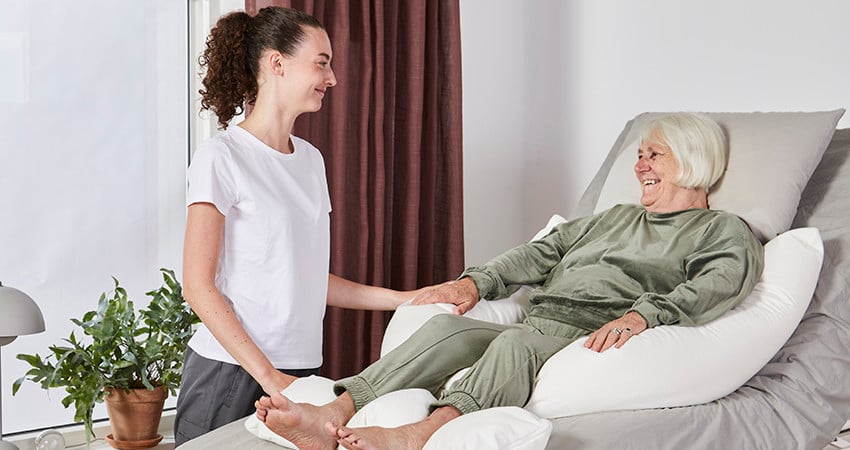
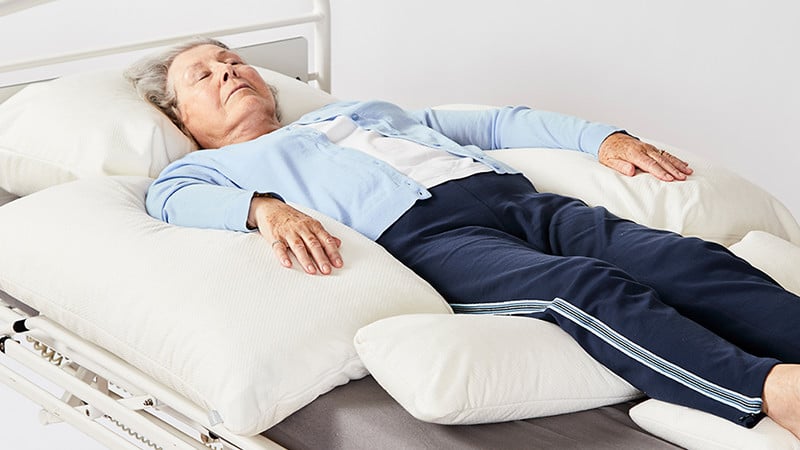
Spasticity and contractures – Prophylactic support
If a person is bedridden due to brain injury it is important to prevent spasticity, which often is a comorbidity. The spasticity is controlled by positioning the person in positions that are opposite to the spasticity pattern.
After just a few days of immobility, the consequences of lack of movement will appear in the muscles and joints. This can cause contractures, which are painful and will impede the persons mobility. A supporting and stable position will provide comfort and better rest, which is important for rehabilitation.
Respiratory problems – Increase ventilation
If a person with respiratory problems is immobilized in bed, they must be positioned in a way that creates a feeling of untroubled breathing. The normal procedure is 30° elevation in a supine position, but to avoid secretions in the lungs, it is also important to be repositioned on both sides. This will create good respiration in the part of the lung that faces away from the mattress.
However, some persons become anxious when positioned on the side. In these cases, AVT-positionings might be the solution. See below for a further description of the lung opening method.
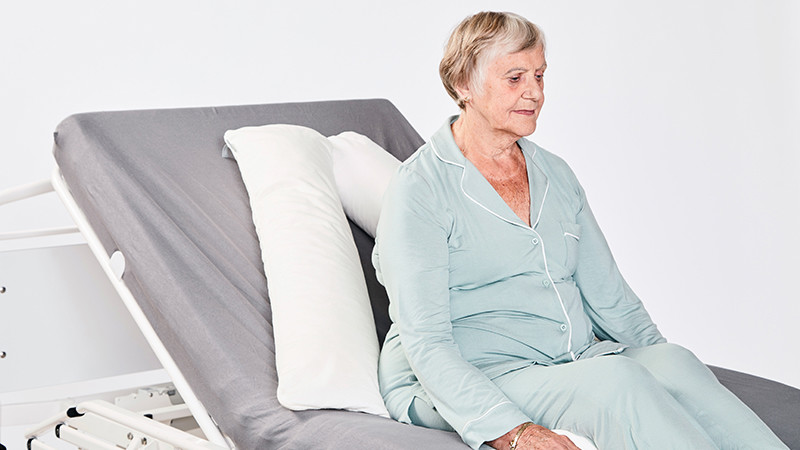
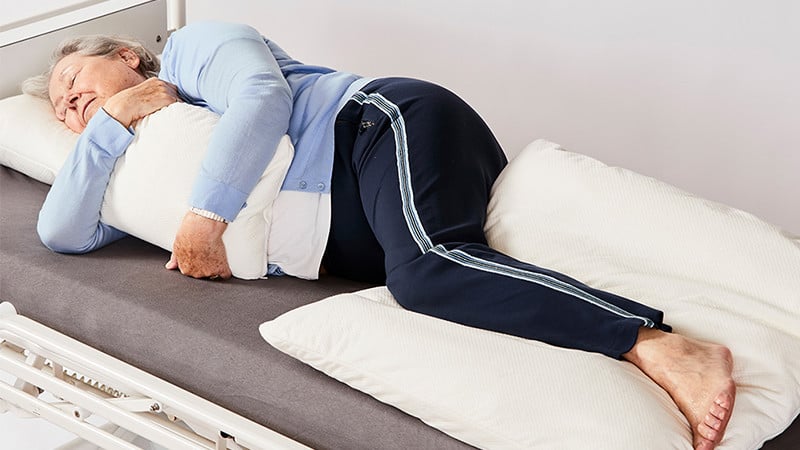
Pain – Relieve and enclose
A bedridden person is often distressed and in pain; either due to trauma or complications of reduced blood flow such as pressure ulcers, contractures, ischemia, or edema. The carer must observe the immobile person, and make sure that the facial expressions show signs of well-being before the repositioning is completed - and to determine if it is time for the next position.
It is also possible to reduce pain and discomfort through sensory stimulation. An enclosing position increases the body awareness through the sense of touch, which causes the level of the stress-reducing hormone Oxytocin to rise.
Anxiety and agitation – Increase relaxation
Enclosing a person with positioning cushions stimulates the sense of touch, and reduces anxiety, agitation, and anger, which can benefit daily co-operation with the carer.
A clear body awareness increases relaxation, focus clarity of thoughts, positive energy, and a calm feeling. This is an optimal therapeutic tool for those with self-harm, distressed or combative behavior, or those who are triggered by seemingly small stimuli in their environment, e.g. accidental or unwanted touch.

The AVT Method
By varying the position of two LeanOnMe Basic L´s, the cushions may support respiration. The method is named AVT because the letters symbolize how the cushions are placed. This can prevent pneumonia and improve lung function because the positions expand different parts of the lungs.
Videos
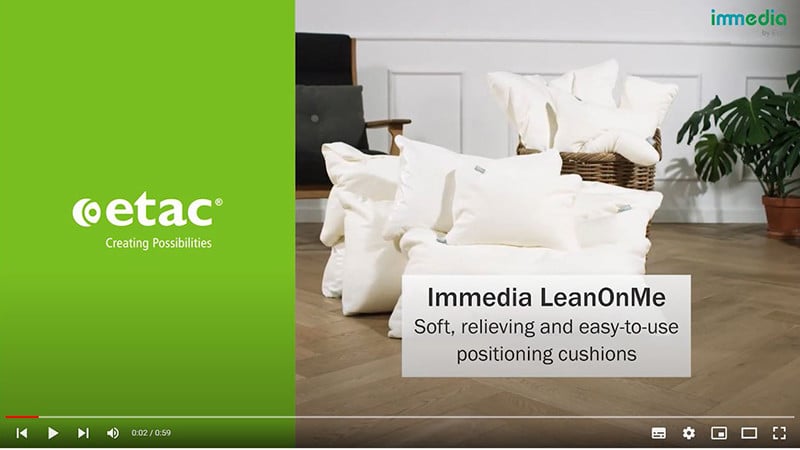
Soft, relieving and easy-to-use positioning cushions
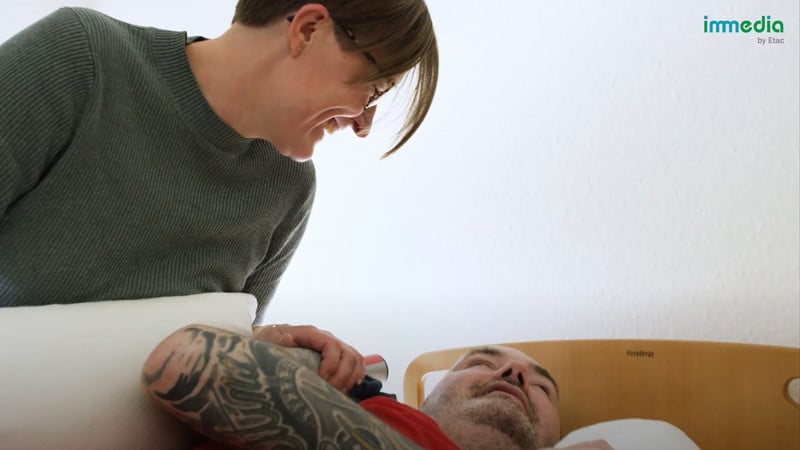
Using the Roll cushion for lateral positioning
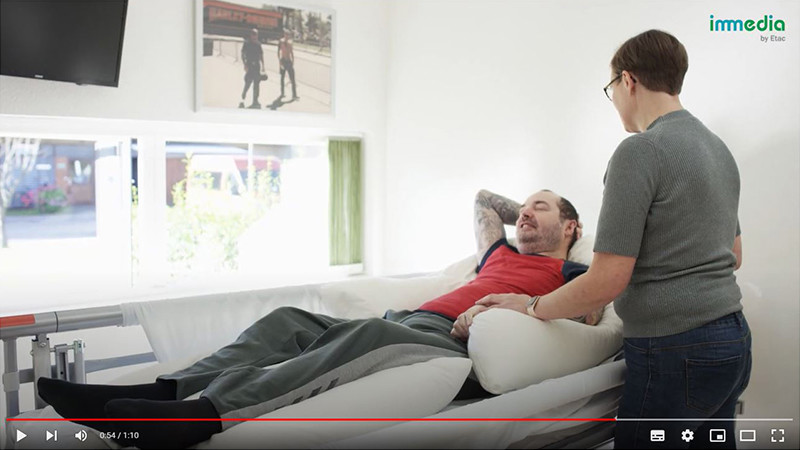
Using the cushions for supine positioning
